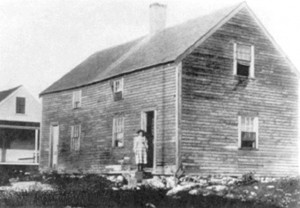03.06
On the late winter night of March 6, 1873, Louis Wagner travelled to Smuttynose, an island about ten miles off of the coast of Portsmouth, New Hampshire. He was searching for $600 he thought was being saved by residents to buy a schooner. Wagner stole a rowboat and made his way to Smuttynose, arriving around 11 p.m.
He broke into the home of Karen Anne Christensen and Anethe Christensen in hopes of robbing them of their money but found nothing. In a fit of rage he hacked the sisters to death with an axe. Arrested the next night by Boston police on a description provided by Portsmouth authorities, Wagner was publicly derided and even stoned when he returned to Portsmouth the next morning. During his trial in Alfred, Maine, the most damning piece of evidence was a white button belonging to Karen that was in Wagner’s possession when he was arrested. The jury took only 55 minutes and returned a verdict of guilty for first degree murder. A series of reprieves followed, but Wagner joined another convicted murderer on the gallows at Thomaston State Prison June 25, 1875. He professed his innocence up to the moment he died, and many had come to believe him. No positive evidence has been uncovered to support Wagner’s contention. The murders have been the subject of many books and poems. They include, The Weight Of Water by Anita Shreve, Ballad Of Louis Wagner by John Parrault, and A Memorable Murder by Celia Thaxter. There is also a movie in the works by director Oliver Stone.













